Charles E W Bean, Diaries, AWM38 3DRL 606/89/1 - September - October 1917 - Part 7
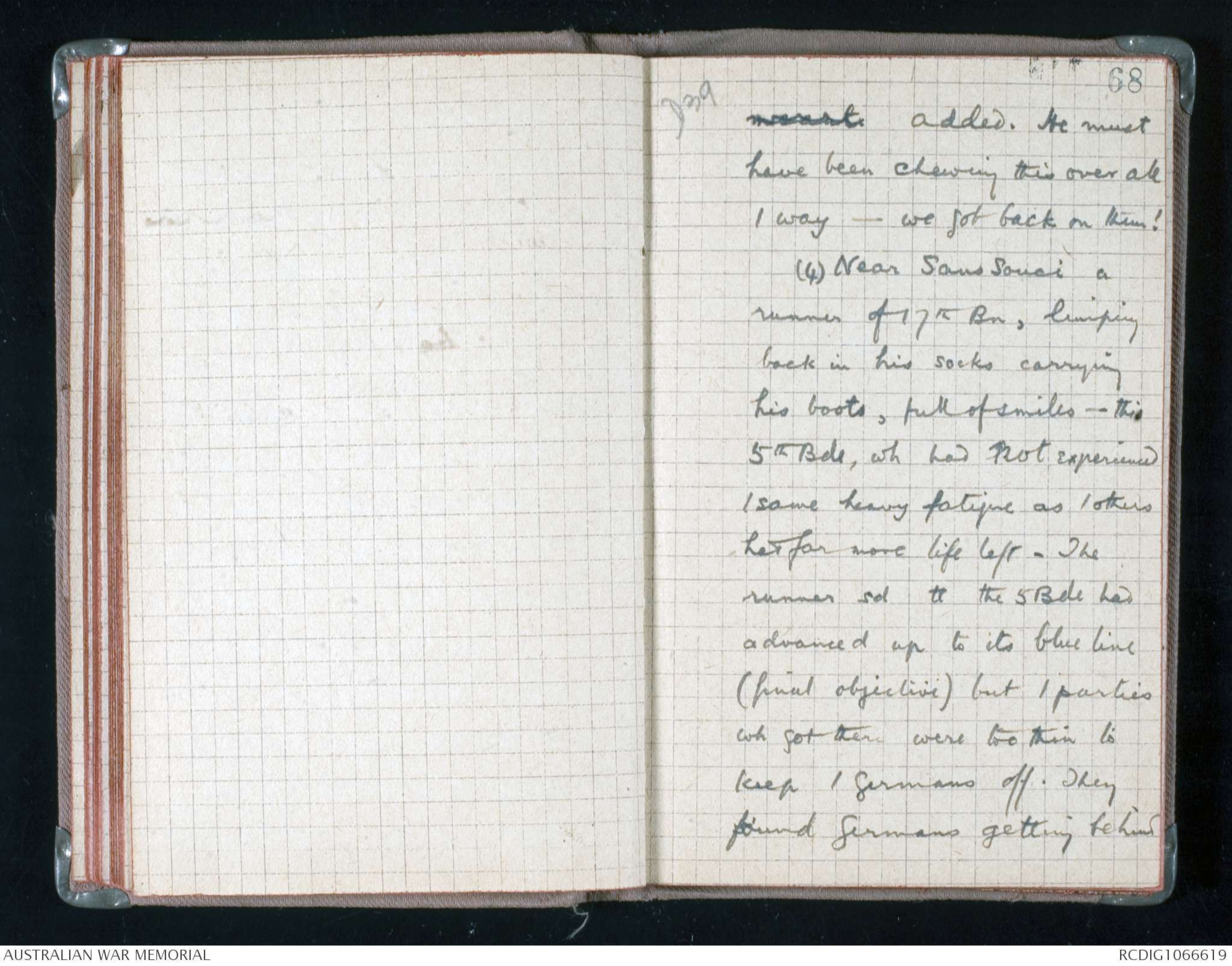
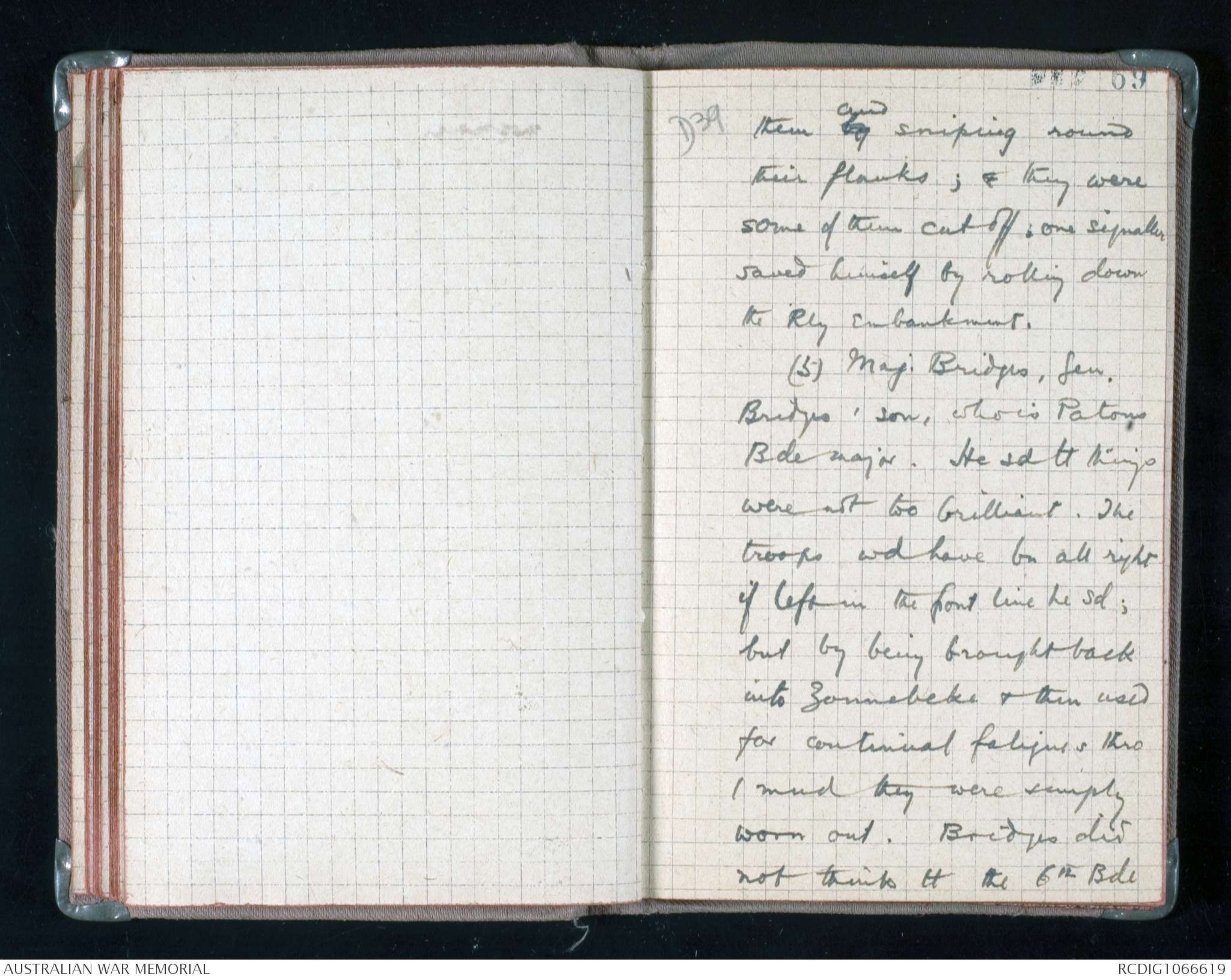
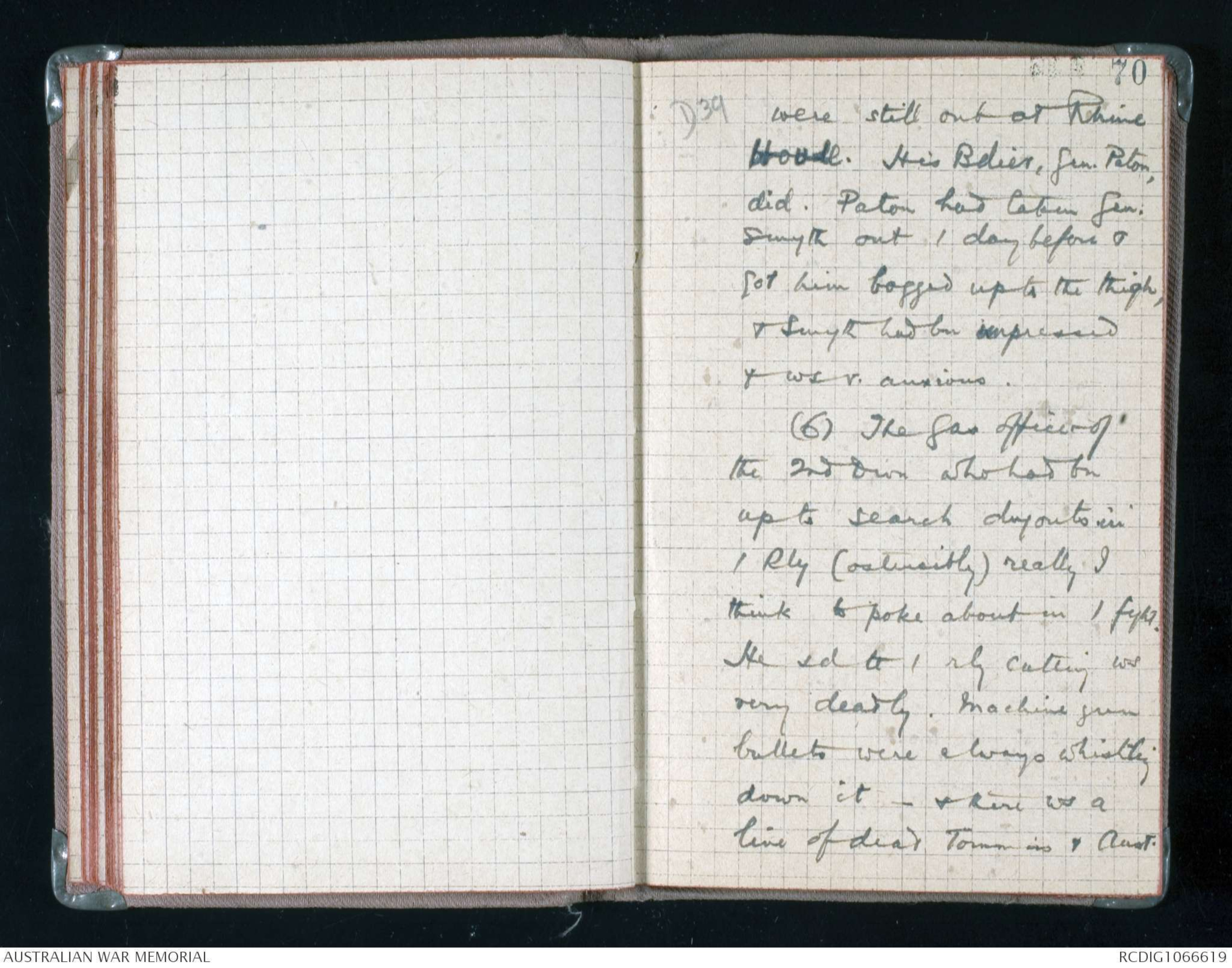
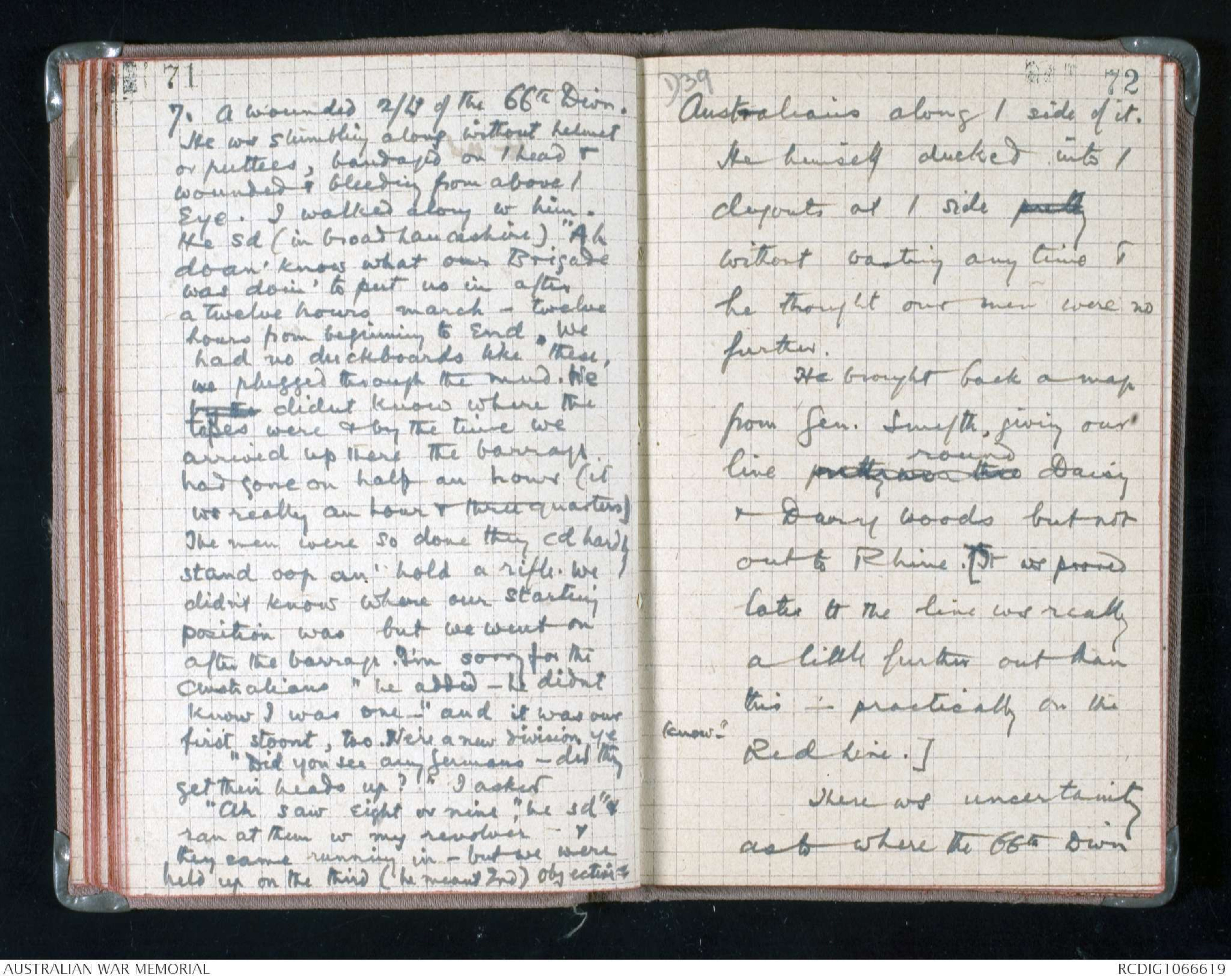
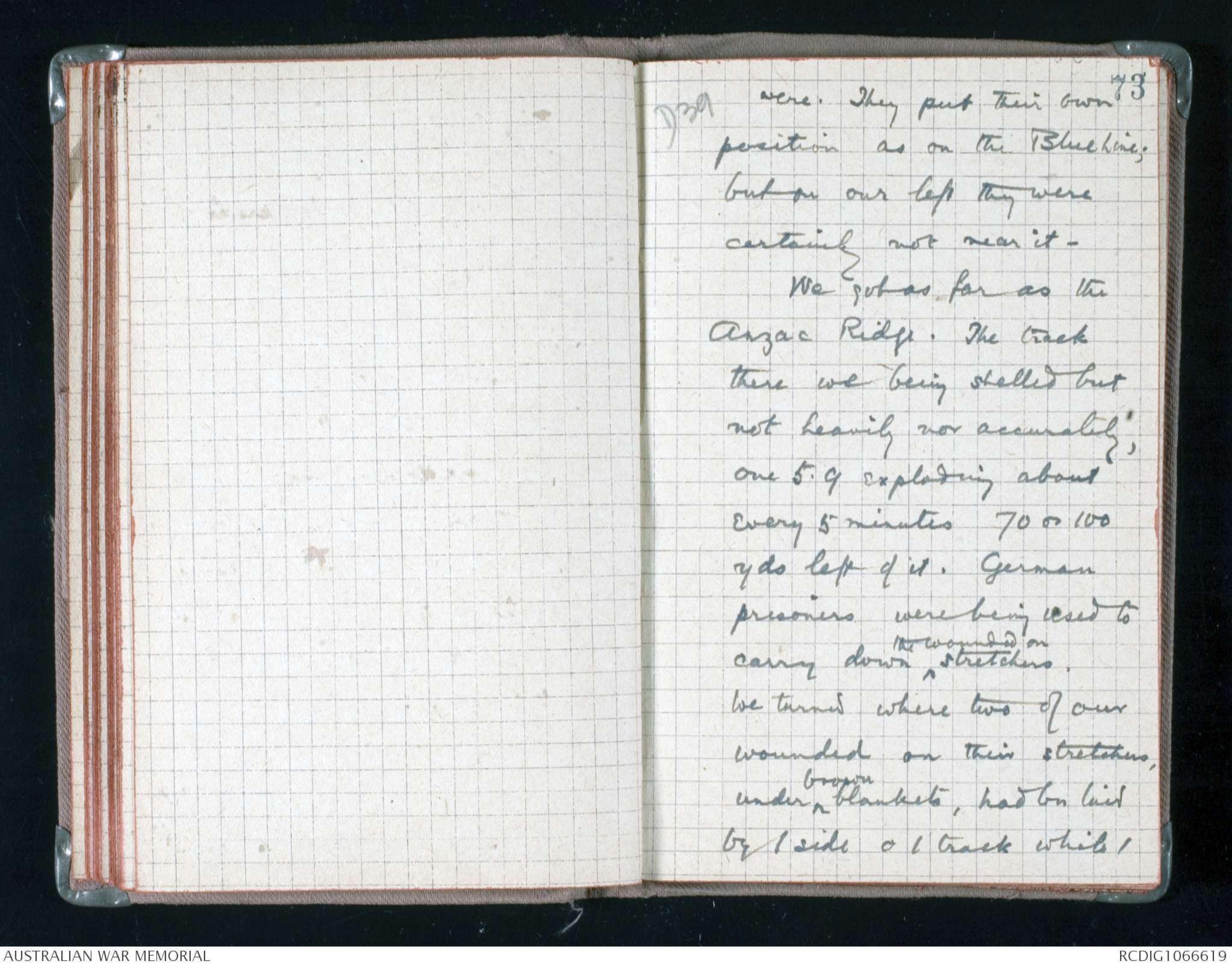
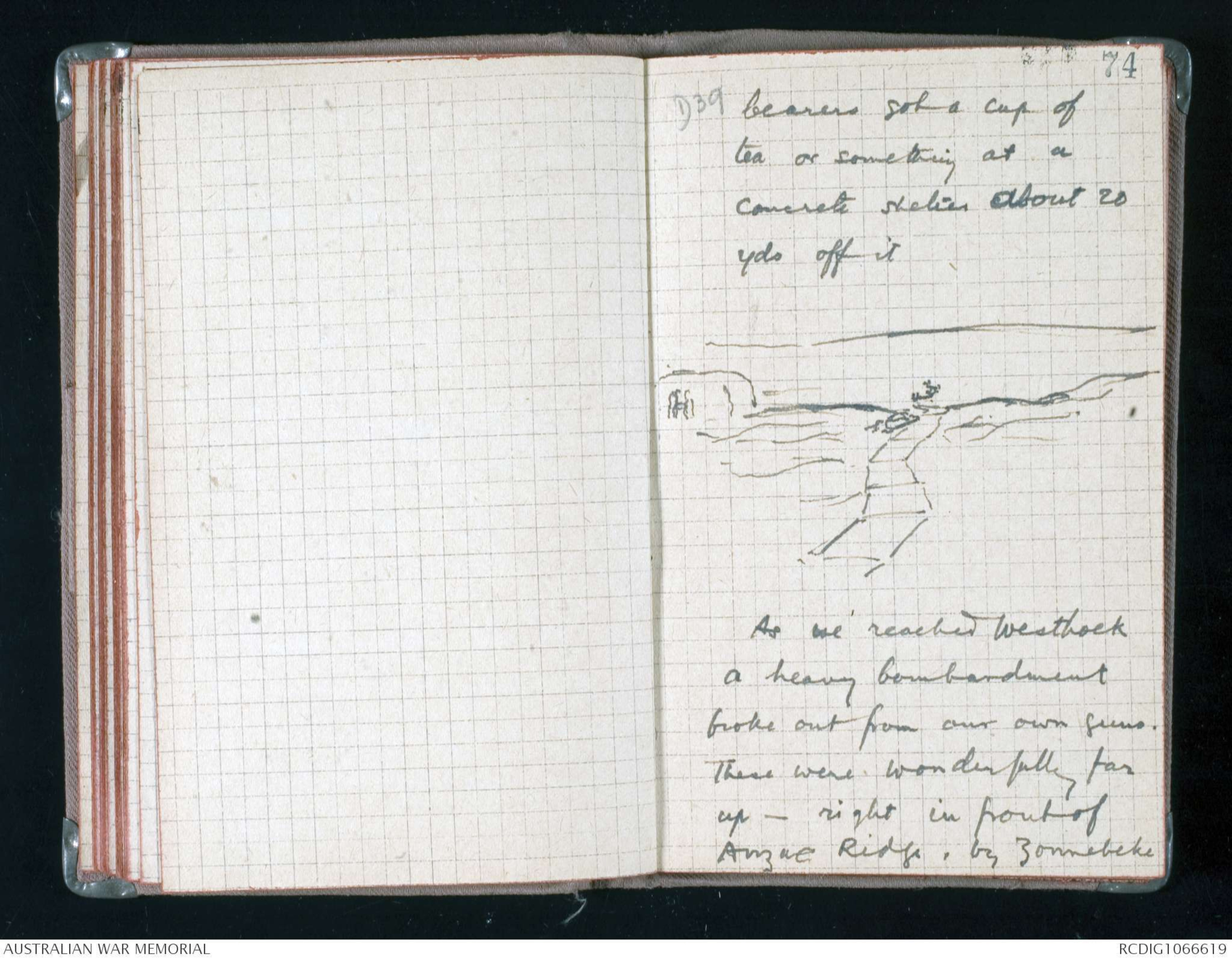
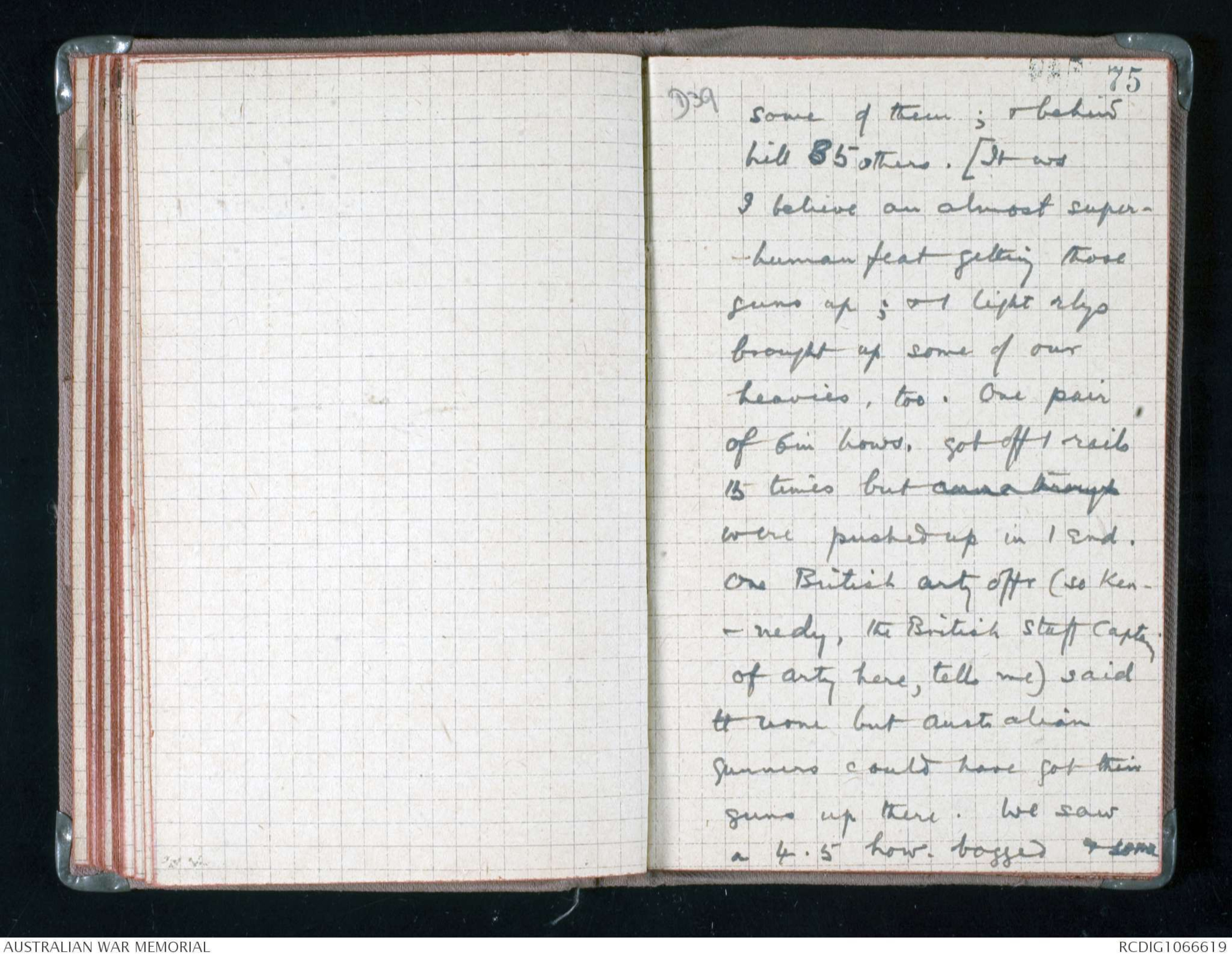
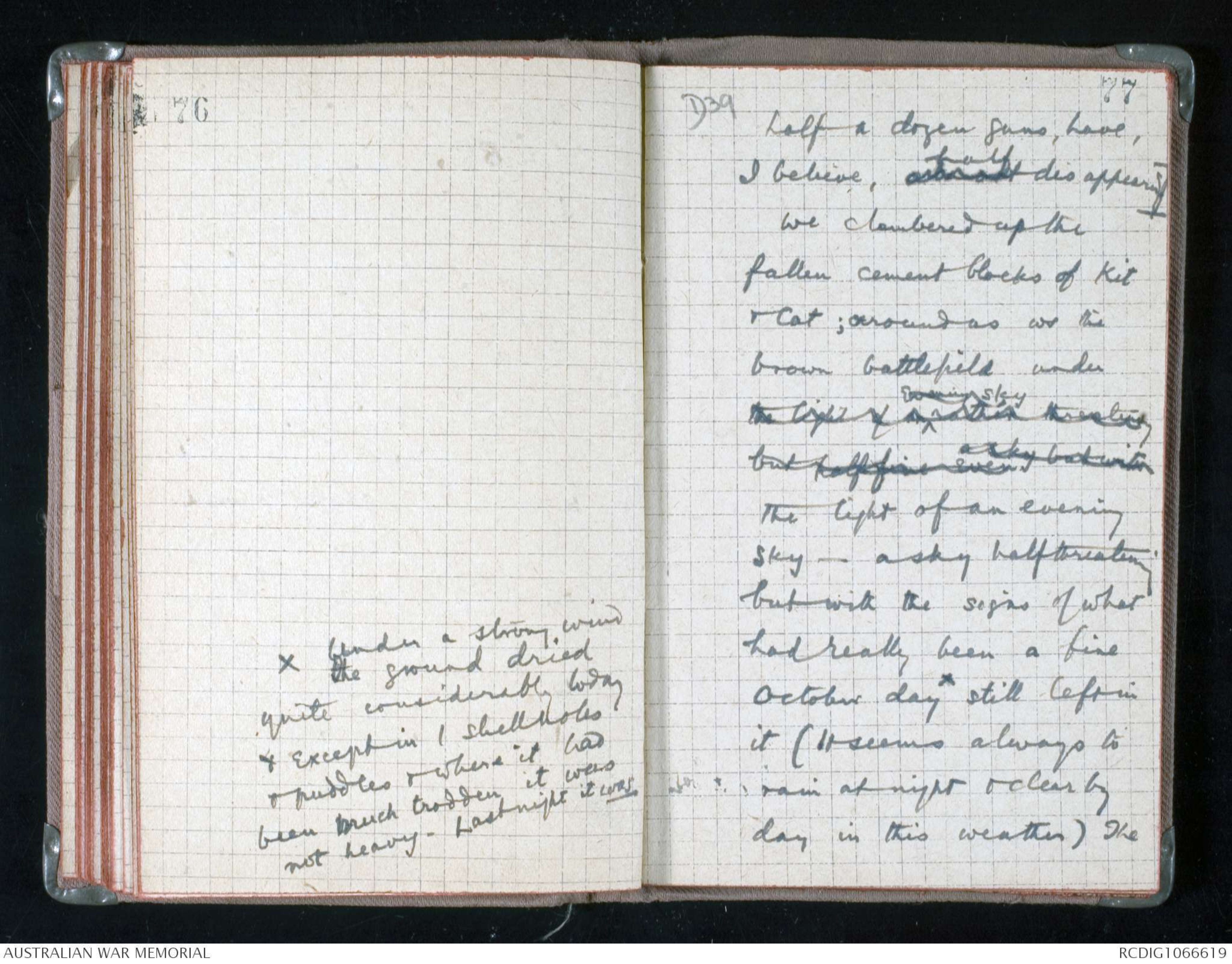
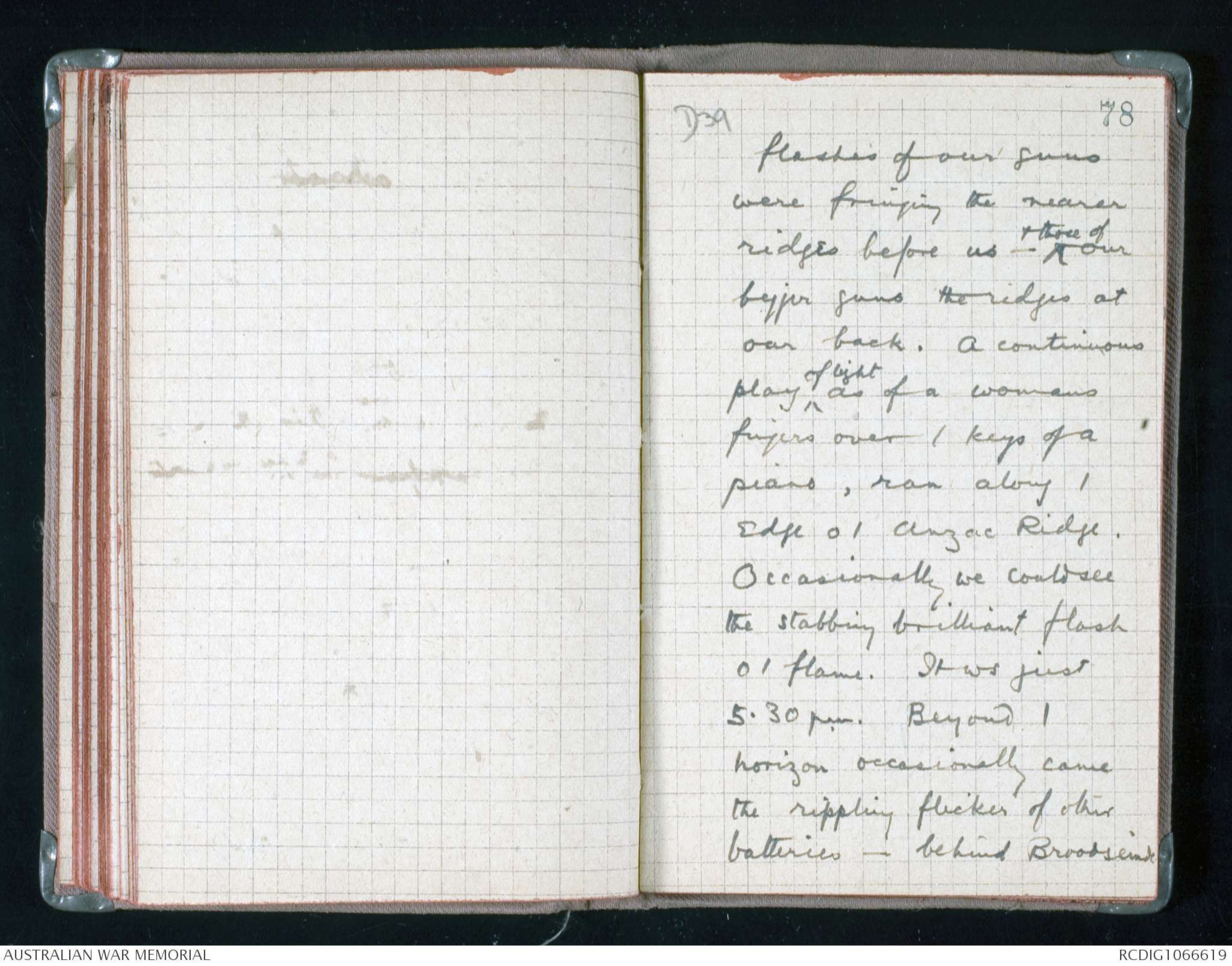
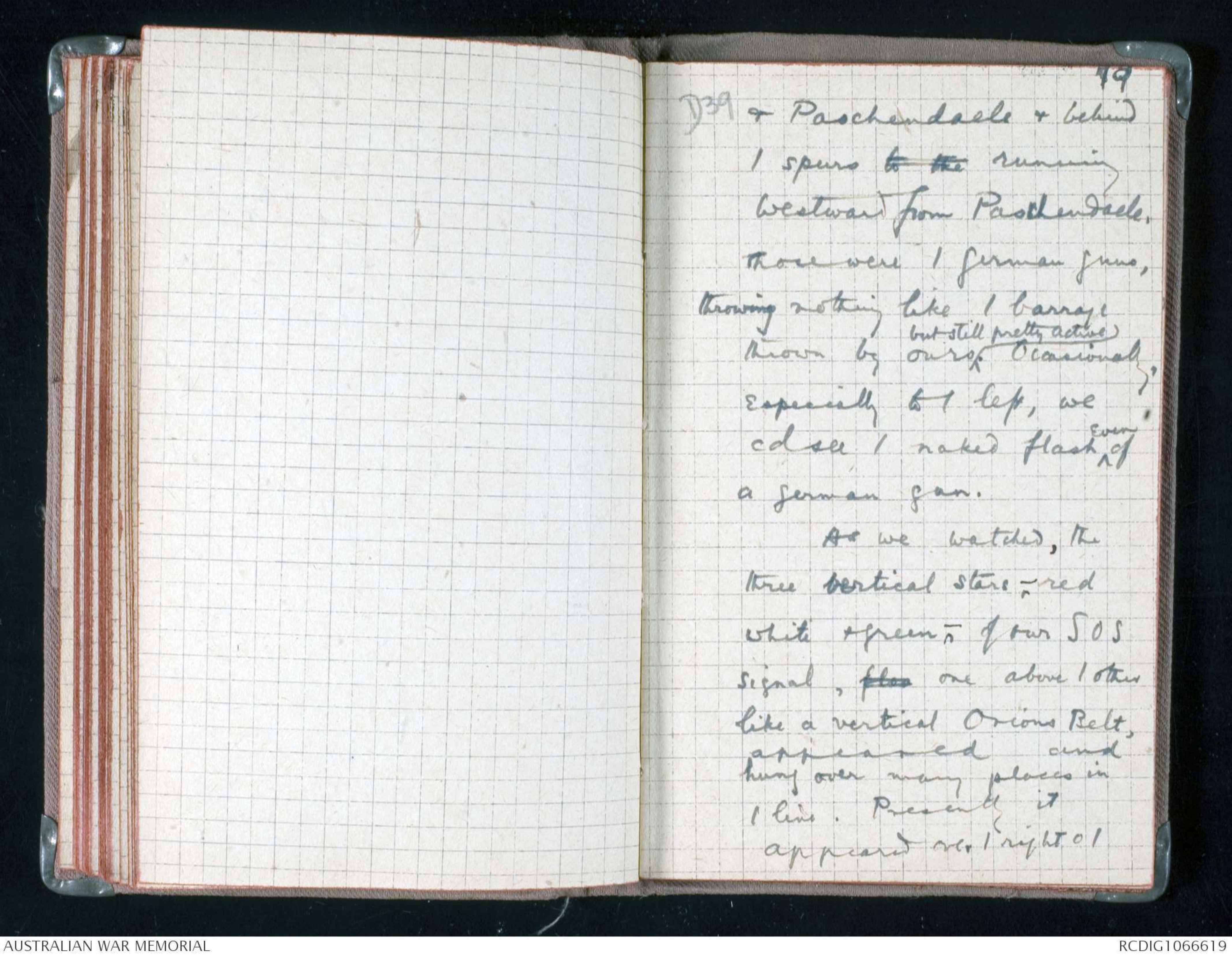
68
D39
moraute added. He must
have been chewing this over all
/ way - we got back on them !
(4) Near Sans Souci a
runner of 17th Bn, limping
back in his socks carrying
his boots, full of smiles - this
5th Bde, wh had not experienced
/ same heavy fatigue as / others
had far more life left - The
runner sd tt the 5 Bde had
advanced up to its blue line
(final objective) but / parties
wh got ther were too thin to
keep / Germans off. They
found Germans getting behind
D39 69
them by and sniping round
their flanks ; & they were
some of them cut off ; one signaller
saved himself by rolling down
the Rly embankment.
(5) Maj. Bridges, Gen,
Bridges ' son, who is Patons
Bde major. He sd tt things
were not too brilliant. The
troops wd have bn all right
if left in the front line he sd;
but by being brought back
into Zonnebeke & then used
for continual fatigues thro
/ mud they were simply
worn out. Bridges did
not think tt the 6th Bde
70
D39
were still out at Rhine
House. His Bdier, Gen Paton,
did. Paton had taken Gen.
Smyth out 1 day before &
got him bogged up to the thigh,
& Smyth had bn impressed
& ws v. anxious.
(6) The Gas officer of
the 2nd Divn who had bn
up to search dugouts in
/ Rly (ostensibly) really I
think to poke about in / fight.
He sd tt / rly cutting ws
very deadly. Machine gun
bullets were always whistling
down it - & there ws a
line of dead Tommies & Aust.
71
7. A wounded 2/ Lt of the 66th Divn.
He ws stumbling along without helmet
or putties, bandaged on / head &
wounded & bleeding from above /
Eye. I walked along w him.
He sd (in broad Lancashire) "Ah
doan' know what our Brigade
was doin' to put us in after
a twelve hours march - twelve
hours from beginning to end. We
had no duckboards like these,
we plugged through the mud. Heby the didnt know where the
tapes were & by the time we
arrived up there the barrage
had gone on half an hour (it
ws really an hour & three quarters)
The men were so done they cd hardly
stand oop an' hold a rifle. We
didn't know where our starting
position was but we went on
after the barrage. I'm sorry for the
Australians " he added - he didn't
know I was one- " and it was our
first stoont, too. We're a new division ye know.”
"Did you see any Germans - did they
get their heads up ? " I asked
"Ah saw eight or nine " he sd " I
ran at them w my revolver - &
they came running in - but we were
held up on the third (he meant 2nd) objectives
D39 72
Australians along / side of it.
He himself ducked into /
dugouts at / side pretty
without wasting any time &
he thought our men were no
further.
He brought back a map
from Gen. Smyth, giving our
line pretty ran thro round Daisy
& Danny Woods but not
out to Rhine. [It ws proved
later tt the line ws really
a little further out than
this - practically on the
Red Line.]
There ws uncertainty
as to where the 66th Divn
73
D39
were. They put their own
position as on the Blue Line;
but on our left they were
certainly not near it -
We got as far as the
Anzac Ridge. The track
there ws being shelled but
not heavily nor accurately;
one 5.9 exploding about
every 5 minutes 70 or 100
yds left of it. German
prisoners were being used to
carry down ∧the wounded on stretchers.
We turned where two of our
wounded on their stretchers,
under ∧ brown blankets, had bn laid
by / side o / track while /
D39 74
bearers got a cup of
tea or something at a
concrete shelter about 20
yds off it
Hand drawn diagram - see original document
As we reached Westhoek
a heavy bombardment
broke out from our own guns.
These were wonderfully far
up - right in front of
Anzac Ridge, by Zonnebeke
D39 75
some of them ; & behind
hill 35 others. [It ws
I believe an almost superhuman
feat getting those
guns up ; & / light rlys
brought up some of our
heavies, too. One pair
of 6in hows, got off / rails
15 times but came through
were pushed up in / end.
One British arty offr (so Kennedy,
the British staff Captain
of arty, here, tells me) said
tt none but Australian
Gunners could have got their
guns up there. We saw
a 4.5 how. bogged & some
76
X under a strong wind
the ground dried
quite considerably today
& except in / shellholes
& puddles & where it had
been much trodden it was
not heavy. Last night it was
D39 77
half a dozen guns, have,
I believe, are abt half disappearing]
We clambered up the
fallen cement blocks of Kit
& Cat ; around us ws the
brown battlefield underthe light of an ^evening sky rather threateningbut half fine even^ a sky but with
the light of an evening
sky - a sky half threatening
but with the signs of what
had really been a fine
October day x still left in
it (It seems always to
rain at night & clear by
day in this weather) The
D39 78
flashes of our guns
were fringing the nearer
ridges before us - ^& three of our
bigger guns the ridges at
our back. A continuous
play ^of light as of a woman’s
fingers over / keys of a
piano, ran along /
edge o / Anzac Ridge.
Occasionally we could see
the stabbing brilliant flash
o / flame. It was just
5.30 pm. Beyond /
horizon occasionally came
the rippling flicker of other
batteries - behind Broodseinde
79
D39
& Paschendaele & behind
/ spurs to the running
westward from Paschendaele,
those were / German guns,
throwing nothing like / barrage
thrown by ours ^but still pretty active. Occasionally,
especially to / left, we
cd see / naked flash ^even of
a German gun.
As we watched, the
three vertical stars, - red
white & green - of our SOS
signal, floa one above / other
like a vertical Orion’s Belt,
appeared and
hung over many places in
/ line. Presently it
appeared over / right o /
 Deb Parkinson
Deb ParkinsonThis transcription item is now locked to you for editing. To release the lock either Save your changes or Cancel.
This lock will be automatically released after 60 minutes of inactivity.